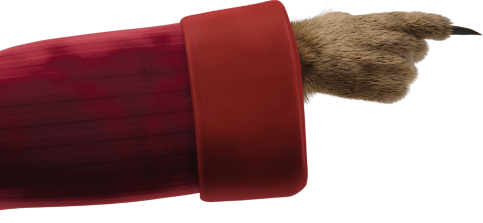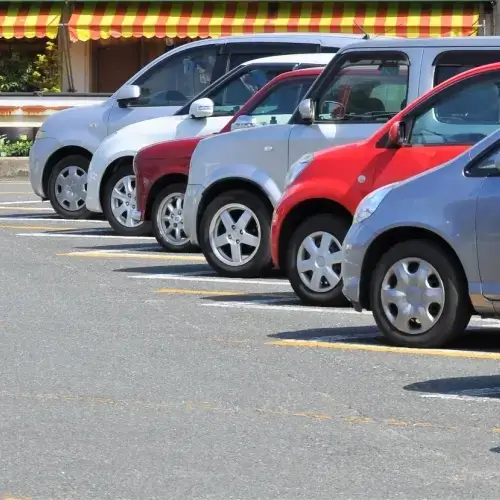Compare Car Insurance
Kirsteen saved $285*
A better way to get car insurance quotes


*Kirsteen is based in 3197 VIC, switched her 2010 Toyota Prado on 28/05/2024.







We do not compare all brands in the market or all products offered by all brands. At times certain brands or products may not be available or offered to you. Learn more about how our comparison service works.
Our customers are paying less

Ian lowered their premium by
Ian from Kingsford, NSW switched to a low kilometre policy with a higher excess and an age restriction and is paying less to cover their Audi A3.

Emily lowered their premium by
Emily from Hurtsbridge, Vic switched to a market value policy and changed their window glass cover and is paying less to cover their Hyundai Tucson.
What’s the difference between types of car insurance?
We’ve compiled this table of benefits to help you see the differences between the levels of cover. This information should be used as a guide only, as different policies and insurers might offer varying coverage.
Comprehensive
Usually the highest level of cover available, it includes protection for your car and also covers damage to other people’s vehicles and property.
- Legal liability for third party vehicle and property damage
- Damage to your car in an accident
- Loss or damage to your car from fire and theft
- Storm damage to your car
- New car replacement
Third Party Fire and Theft
Generally covers damage you cause to other people’s vehicles and property. It also includes protection for your car for fire and theft.
- Legal liability for third party vehicle and property damage
- Damage to your car by an uninsured driver
- Loss or damage to your car from fire and theft
- Storm damage to your car
- New car replacement
Third Party Property Damage
It provides cover for damage you cause to other people’s vehicles and property. It only covers your car if it’s damaged by an uninsured vehicle.
- Legal liability for third party vehicle and property damage
- Damage to your car by an uninsured driver
- Loss or damage to your car from fire and theft
- Storm damage to your car
- New car replacement
Comprehensive
Usually the highest level of cover available, it includes protection for your car and also covers damage to other people’s vehicles and property.
- Roadside assistance
- Car hire after an accident
- Windscreen excess cover
- Choice of repairer
Third Party Fire and Theft
Generally covers damage you cause to other people’s vehicles and property. It also includes protection for your car for fire and theft.
- Roadside assistance
- Car hire after an accident (fire and theft only)
- Windscreen excess cover
- Choice of repairer
Third Party Property Damage
It provides cover for damage you cause to other people’s vehicles and property. It only covers your car if it’s damaged by an uninsured vehicle.
- Roadside assistance
- Car hire after an accident
- Windscreen excess cover
- Choice of repairer
Top 5 things to know about car insurance
There are different types of cover
From third party insurance covering other drivers’ cars in an accident to a comprehensive policy for more complete cover for your car and theirs – there are different types of cover to suit every car and driver.
There are ways to save on your premium
There are ways to save money on your premium without losing your cover. Some drivers may choose to increase their excess, while others that don’t allow younger drivers to get behind the wheel of their car may accept age restrictions to lower their premiums.
Optional extras can broaden your coverage
Our partners offer optional extras so you can get more from your insurance. This is just another way to tailor your car insurance to suit your needs and broaden your coverage.
It pays to compare car insurance
Simple to use
It only takes a few minutes to look for new car insurance policies that suit your needs.
Compare & save
Compare car insurance coverage options and quotes from a range of providers side-by-side.
Switching is easy
It’s easy to switch to a car insurance deal that better suits you and your budget.

Why compare with us?
Our smart comparison technology is trusted, free, safe and secure.
Safe and secure
We have robust data security and take your privacy seriously. The information you provide to us will never be used without your permission.

We believe the best decisions start with a comparison.
We’re proud to have helped millions of Aussies look for a better deal.


A guide to car insurance
Updated 16 October 2024

Kochie discusses what you need to know about car insurance in Australia.
Don’t miss our top tips for ways to potentially uncover savings in your policy.



Getting around in Australia can be so expensive and if you’re unlucky enough to be in an accident, repair bills can be a major drain on your wallet. Insurance is there to help cover unexpected expenses, but it’s another bill on a long list. The good news is you have the power to save, and that’s where Compare the Market comes in. The next time you receive your policy renewal notice, head online, or open the Compare the Market “Simples” app to see a range of options in a matter of minutes. The difference could be hundreds of dollars. And by putting your policy under the microscope, you could uncover even more savings.
The experts at Compare the Market had these tips: If you’re a safe driver, you may consider increasing your excess. You’ll pay more in the event of an accident but less on your annual premium. If you’re now driving less because you’re working from home, see if a low kilometer policy could be right for you. If your kids have grown up, can you restrict your policy to drivers over twenty five only. It could be big savings for you. What about paying annually instead of monthly or fortnightly?
Car insurers often charge more when you pay in monthly installments.
When you pay annually, it’s done for the year.
And you don’t have to wait for renewal time either. You can compare and switch at any time regardless of when your policy ends. Just check to see if any fees apply. So what are you waiting for? See if there’s a better value car insurance policy out there for you by comparing today with Compare the Market.
Expert tips for choosing the right car insurance for you
Our Executive General Manager of General Insurance, Adrian Taylor, has some helpful tips for finding the right car insurance policy for you.

Compare your policy renewal offer with last year’s
Your renewal policy should show both last year’s premium and your new premium, meaning you can instantly see how much more you’re being asked to pay. Make note of the difference to see how big the new change is before comparing car insurance.
Save money on your insurance
Paying your car insurance annually can often be cheaper than paying it monthly or fortnightly. If you can, consider paying a lump sum once a year for a lower price.
Consider who is a listed driver
Consider who is driving your car. Generally, drivers under the age of 25 will likely increase the premium you pay. If you can restrict the age of drivers on your policy, this can help you save money.
Cancel your policy at any time
You don’t have to wait for your renewal to save money, either. You can cancel your existing policies at any time and switch insurers. Just be aware of any cancellation fees that may apply.
What is car insurance?
Car insurance protects you against the cost of damages caused by insured events, which may include things like car accidents, theft, weather events and other unforeseen events. Depending on your cover, a car insurance policy helps pay for the cost of these damages to your car, as well as any property you might damage with your vehicle.
Car insurance coverage
What does car insurance cover?
There are different levels of cover to choose from. To help you understand the types of car insurance, we’ve compiled the following table as a simple way to compare them.
| What is and what isn’t covered? | Third Party Property Damage | Third Party Fire and Theft | Comprehensive | CTP/Green Slip |
|---|---|---|---|---|
| Damage to your own vehicle following a collision | ✗ | ✗ | ✓ | ✗ |
| Loss or damage to a third party’s vehicle/property caused by your car (legal liability) | ✓ | ✓ | ✓ | ✗ |
| Loss or damage to your own vehicle caused by weather (storm, flood, hail) | ✗ | ✗ | ✓ | ✗ |
| Loss or damage to your vehicle caused by theft | ✗ | ✓ | ✓ | ✗ |
| Hire car after theft | ✗ | ✓ | ✓ | ✗ |
| New car replacement (if your car is less than two years old) | ✗ | ✗ | ✓ | ✗ |
| Loss or damage to your vehicle caused by fire | ✗ | ✓ | ✓ | ✗ |
| Loss or damage of personal possessions/effects | ✗ | ✗ | ✓ | ✗ |
| Damage to your vehicle caused by an uninsured driver | ✓ | ✓ | ✓ | ✗ |
| Emergency transport and/or accommodation | ✗ | ✗ | ✓ | ✗ |
| Towing | ✗ | ✓ | ✓ | ✗ |
| Key replacement | ✗ | ✗ | ✓ | ✗ |
| Death benefit | ✓ | ✓ | ✓ | ✗ |
| Legal liability for injuries or death to other people | ✗ | ✗ | ✗ | ✓ |
| Variable excess | ✗ | ✗ | ✓ | ✗ |
| Restricted driver discount | ✓ | ✓ | ✓ | ✗ |
| Not all items listed in the table are included in all policies. Read the relevant Product Disclosure Statement (PDS) for all inclusions and exclusions in a specific policy. The Target Market Determination (TMD) could also help you determine if the policy suits your circumstances. | ||||
What isn't covered by car insurance?
There are a few exclusions common to all the different car insurance options, including:
- Driving while intoxicated
- Driving without a licence
- Driving an unregistered vehicle
- Lying or withholding information from your insurer
- The car isn’t roadworthy
- Overloading the car with too many passengers
- General wear and tear
- Driving in a race or competitive motorsport event
- Reckless or dangerous driving
- Using your car for illegal activity at the time of the incident.
Does car insurance cover me for ridesharing?
Some car insurance providers do cover rideshare driving but you might find that it’s only covered on certain policies (such as comprehensive car insurance). You’ll typically be required to have Third Party Property Damage as a minimum by the rideshare platform you work for.
When comparing car insurance quotes with Compare the Market, make sure you select a ‘business use’ option when asked how you use your vehicle. You’ll then be asked follow-up questions about whether you transport passengers, food or goods for payment.
Will car insurance cover my vehicle for business use?
Car insurance can cover your vehicle for business use and for the same insured events as personal-use car insurance. If something happens on the roads while you’re travelling for business, car insurance with business use cover can provide peace of mind.
When comparing car insurance with Compare the Market, make sure you select the appropriate usage when you’re asked how you use your car.
Can I get car insurance for my four-wheel drive?
You can get car insurance for your four-wheel drive (4WD or 4×4) like any other car. This insurance usually has limited coverage for off-road driving, with some conditions on when you will be covered for off-roading. We answer a host of questions about car insurance for 4WDs here.
Are learner drivers covered by car insurance?
Learner drivers are covered by car insurance, but some insurers require you to add them as a listed driver. You can contact your insurer to find out whether you need to list any learner drivers for them to be covered.
Should you need to make a car insurance claim for an accident where a learner driver was behind the wheel, they may incur a young driver excess if they’re under a certain age limit at the time of the incident.
Does car insurance cover the car's window glass?
Windscreens and window glass can be covered by car insurance, as specified under your policy. A comprehensive car insurance policy can also cover the cost of repairing accidental damage to your windscreen as a result of an insured event.
You might also see a windscreen excess reduction or waiver as an optional extra on the policy. Some insurers have a specific additional excess payment for windscreens that you would need to pay in a claim on top of any other excess payments that apply. Paying this waiver can reduce or remove the excess payment for windscreens.
Keep in mind that adding windscreen cover could come at an extra cost.
What is the best car insurance?
The best car insurance for you will depend on the level of cover you want and your circumstances. The benefits of the three types of car insurance vary, and there isn’t a one-size-fits-all policy.
Here’s what you need to know about each level of cover.
Comprehensive
 If you’re looking for financial protection for your own car, comprehensive car insurance covers the most issues out of the three available products. These could include damages caused by collisions, fire, hail and storms, as well as cover for theft or attempted theft.
If you’re looking for financial protection for your own car, comprehensive car insurance covers the most issues out of the three available products. These could include damages caused by collisions, fire, hail and storms, as well as cover for theft or attempted theft.
If you have a new car, comprehensive car insurance could also cover the total loss of your vehicle and provide a similar replacement vehicle, depending on which policy you choose.
As well as damages to your own car, comprehensive car insurance also covers damage to other people’s property and motor vehicles from car accidents.
While comprehensive car insurance offers the most cover, it’s usually the most expensive type of policy. If your main concern is the damage you cause to other cars, you could consider purchasing a third party car insurance option.
Third Party Fire and Theft
Out of the third party car insurance options, Third Party Fire and Theft cover typically offers more financial protection than Third Party Property Damage cover. However, it will typically cost more than Third Party Property Damage.
It provides cover for your car if it’s damaged by fire or stolen, as well as damages you cause to other vehicles and property in a car accident. Some insurers may also cover your car if it’s damaged by an uninsured driver.
This could be a type of car insurance to consider if you’re looking to cover your vehicle but don’t want to pay for comprehensive cover.
Third Party Property Damage
Third Party Property Damage is typically the cheapest of the optional car insurance products and provides the most basic level of cover. It generally covers damage to other vehicles and property caused by your car.
Depending on your insurer, Third Party Property Damage may provide cover for your car if it’s damaged by an uninsured driver.
Costs and premiums
How much is car insurance?
 The cost of insurance and how it’s calculated (known as your premium) depends largely on the type of cover you hold (i.e. comprehensive cover, Third Party Fire and Theft or Third Party Property Damage) and how risky you are to insure.
The cost of insurance and how it’s calculated (known as your premium) depends largely on the type of cover you hold (i.e. comprehensive cover, Third Party Fire and Theft or Third Party Property Damage) and how risky you are to insure.
That risk is based on a variety of variables that determine your car insurance premiums, including:
- Your age
- The address you park the car overnight
- Your car model and the age of your car
- The average number of kilometres you drive each year
- Any car modifications or dealership add-ons
- Who else uses the car
- Your driving and claims history.
How can I get cheap car insurance?
You can potentially get cheaper car insurance by:
- Paying annually. Paying in one, annual lump sum (as opposed to monthly or quarterly) is generally cheaper as insurers may add additional charges for paying monthly or quarterly.
- Increasing your basic excess. If you increase your excess, you can typically reduce the cost of your premiums. However, be aware that if you need to claim, you will be paying a higher excess.
- Restricting drivers’ ages. By restricting drivers of your vehicle to a certain age limit (e.g. restricting drivers under 25), you may be able to save on your premium. In theory, older drivers are generally more experienced and less risky to insure.
- Driving less. Some insurers will reduce your premium if you’re a low-kilometre driver (e.g. typically under 15,000km each year).
- Comparing often. You might have been on a great value deal a few years ago, but have you reviewed your options lately? Perhaps something cheaper has come along that offers the same benefits, but you won’t know unless you shop around.
What is a car insurance excess?
 An excess is the amount you may be asked to contribute if you make an insurance claim. The policy excess is agreed upon when you take out your policy. If your claim is accepted, you may need to pay your excess to the insurer or the repairer, or the insurer might deduct it from your claim settlement.
An excess is the amount you may be asked to contribute if you make an insurance claim. The policy excess is agreed upon when you take out your policy. If your claim is accepted, you may need to pay your excess to the insurer or the repairer, or the insurer might deduct it from your claim settlement.
There may be different types of car excess that apply to your claim:
- Basic excess. Paid out of pocket when you make an at-fault claim.
- Age/inexperienced driver excess. An additional excess that you may need to contribute if a young or inexperienced driver was in control of the vehicle when it was damaged.
- Unlisted driver excess. If you make a claim but the responsible driver wasn’t listed on the policy, you may have to pay an additional excess for this (if you’re even covered at all).
- Additional excesses. Other additional excesses may also apply depending on the product you’ve chosen.
If a third party was at fault for an accident, you may not be required to pay an excess for any claims you make as a result of this accident. You’ll be asked by your insurance company some details about the person responsible, such as their:
- Name
- Phone number
- Driver licence number
- Car registration.
The exception to this rule is when the at-fault party can’t be personally identified and leaves the incident without giving their details (i.e. a hit-and-run). In this case, you may still be required to pay the excess if they can’t be tracked down.
You may be able to choose a higher policy excess to reduce your insurance premium. Conversely, you can choose a lower policy excess and pay a higher premium. However, if you choose a higher excess you need to make sure you can afford this if you need to make a claim.
To confirm all excesses that may apply to you, be sure to check your PDS and Insurance Certificate for full details.
Important to know
What car insurance extras are available?
 Extras can be added to car insurance policies to extend your coverage.
Extras can be added to car insurance policies to extend your coverage.
Some extras, like roadside assistance, will add to your premium if you choose to include them in your car insurance policy.
Some common extras you may find can be added to your policy include:
- Accident hire car cover. Your insurer may provide you with a hire car when your vehicle is being repaired or replaced following a claim.
- Roadside assistance. Should your car break down or experience any other issues while out on the road, an assistance team will come to help you.
- Windscreen cover. Adding windscreen cover to your policy can reduce or eliminate the excess you need to pay if you claim for a broken windscreen.
What's the difference between market vs agreed value?
The key difference between market value and agreed value car insurance is that with an agreed value policy, you know the total amount you may be covered up to in the event of a claim as this amount was set when you bought the policy or renewed it.
The market value refers to the value of the car in the present day and not the price you paid when you first bought it. Market value is typically calculated by comparing other cars of the same age, make and model that are in a similar condition to yours.
If your car insurance policy offers an agreed value option, this means you can set a sum insured value with your insurer. This can be handy because a car insured for its market value may lose its value over time at a greater rate than you expect. On the other hand, having an agreed value means you’ll receive a payout up to the agreed sum insured rather than being limited to the market value of your vehicle on the day your car is written off. However, keep in mind that choosing an agreed value over market value may increase your premiums.
What qualifies as a classic car?
Classic car insurance is a broad term referring to a product that covers classic, vintage or prestige vehicles. It’s typically broken down into a variety of specific types:
- For car enthusiasts who own automobiles made between 1905 and 1919.
- Covers cars made between 1919 and 1930.
- Prestige, for high-end European or UK-produced sports cars or ‘supercars’ associated with ‘status’ owners.
- American Classics, to cover the owners of US-made ‘muscle cars’, typically manufactured between the late 1970s – early 1980s. You may need to seek out a specialised policy or insurer to cover cars like these.
You may need to seek out a specialised policy or insurer to cover cars like these.
Who offers car insurance in Australia?
There are a wide range of car insurance providers operating in Australia, offering a variety of policies from third party-only car insurance to comprehensive coverage.
Car insurance companies in Australia
The full list of car insurance companies operating in Australia (including the car insurance providers we work with) are listed below:
- 1300 Insurance
- 1Cover
- 1st for Women Insurance
- AAMI
- Aioi Nissay Dowa Insurance
- Allianz
- ANZ
- APIA
- Assetinsure
- Australia Post
- Australian Seniors Insurance Agency
- Bank of Melbourne
- BankSA
- Best Buy Car Insurance
- Bingle.com.au
- Blue Badge Insurance
- Budget Direct
- Bupa
- CCI Personal Insurance
- CGU
- CIL
- Coles Insurance
- COTA Insurance
- Dodo
- Elders Insurance
- Eric Insurance
- Essentials by AAI
- Everyday Insurance (Formerly Woolworths)
- GIO
- Guild Insurance
- Hollard Australia
- Huddle Insurance
- Lexus Insurance
- Lumley Special Vehicles
- MB Insurance Group
- MHIA
- National Seniors Insurance
- NRMA
- NTI
- Oceania Insurance
- Over Fifty Insurance
- Ozicare
- Pacific International Insurance Limited
- PD Insurance
- PowerTorque Insurance
- QBE
- RAA Insurance
- RAC
- RACQ
- RACT
- RACV
- Real Insurance
- Retirease Insurance
- ROLLiN’ Insurance
- Ryno Insurance
- SGIC
- SGIO
- Shannons
- St. George
- Suncorp Insurance
- Territory Insurance Office
- Toyota Insurance
- Ubicar
- Virgin Money
- Virginia Surety Company, Inc
- Westpac
- WFI
- Youi
- Zurich
List accurate as of June 2023 and is subject to change.
Source: Insurance Council of Australia: Find an Insurer – Category 33: Car insurance companies. 2023. Accessed June 2023.
How to get car insurance online
You can compare car insurance policies in just minutes through our comparison service. Simply follow the prompts and our service can provide a list of policies from our partners.
You’ll need to provide the following information to get a car insurance quote through our service, so have these details handy.
Basic car details
You can enter your car details into our comparison service in two ways.
Typing in your registration number will pre-fill basic car details like your vehicle’s make and model. Alternatively, if you don’t have your rego details, you can manually enter your car details.
The level of cover
Choose between Comprehensive, Third Party Fire and Theft or Third Party Property Damage for your level of cover.
Advanced car details
Some other car details you’ll need to complete your car insurance quote include:
- Any non-standard accessories or modifications
- Unrepaired hail damage
- Remaining finance on the vehicle
- How your car is used (private, business, etc)
- How much you drive
- Where you live and park your car.
Personal details
To complete your car insurance quote, these are some of the personal details you’ll have to include:
- Gender
- Date of birth
- Employment status
- Age you got your licence
- Claims history.
Meet our car insurance expert, Adrian Taylor
As an Executive General Manager of General Insurance, Adrian Taylor is passionate about demystifying car insurance for consumers, so they have a better understanding of what they’re covered for. Adrian’s goal is to make more information available from more insurers, to make it easier to compare and save.
Adrian has over 13 years’ experience in the financial services industry. He helps review general insurance content to ensure it accurately breaks down complex insurance topics.
